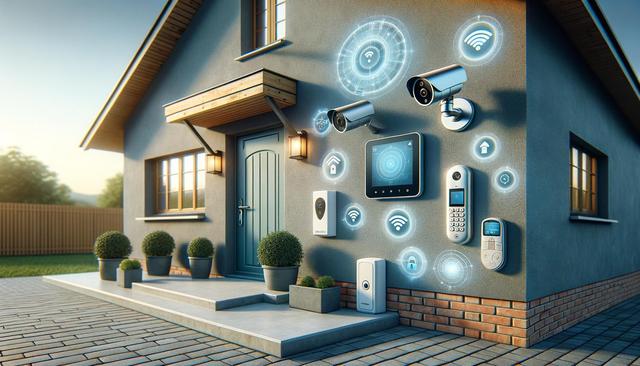
A Comprehensive Guide to Home Security Systems
Understanding the Basics of Home Security Systems
Home security systems have evolved significantly over the past decade, offering more sophisticated and user-friendly solutions than ever before. At their core, these systems are designed to monitor and protect residential properties from threats such as burglary, fire, and unauthorized access. A typical home security system includes a combination of devices such as door and window sensors, motion detectors, surveillance cameras, and control panels. Depending on the setup, these systems may also incorporate environmental sensors that detect smoke, carbon monoxide, or flooding.
There are generally two types of systems: monitored and unmonitored. Monitored systems are connected to a central monitoring station that responds to alerts by contacting emergency services. Unmonitored systems, on the other hand, rely on alarms and notifications sent to the homeowner, who must then decide on the appropriate response. While both options can be effective, monitored systems provide an added layer of security and peace of mind.
Key Features to Look For
When evaluating home security systems, it’s important to consider the features that align with your specific needs. Technological advancements have introduced a wide array of functionalities that enhance both security and convenience. Some of the most useful features include:
- Smartphone integration for real-time alerts and remote control
- Two-way audio to communicate through security cameras
- Night vision and high-definition video recording
- Automated locks and lighting systems
- Environmental monitoring for smoke, gas, and water leaks
Many systems are now compatible with smart home ecosystems, allowing you to control security, lighting, and even thermostats from a single app. Integration with virtual assistants also offers voice-activated commands, making home management more streamlined.
Installation Options: DIY vs. Professional
Homeowners can choose between do-it-yourself (DIY) installations and professionally installed systems. DIY options are typically more affordable and allow for greater customization. They are ideal for renters or those who prefer a flexible setup without long-term contracts. These kits often come with easy-to-follow instructions and wireless components that simplify the installation process.
On the other hand, professional installation ensures that every component is correctly set up and optimized for performance. Installers can also provide valuable insights on device placement and system settings. While this option may involve a higher upfront cost, it can be beneficial for individuals who want a hassle-free experience or have larger homes with complex layouts.
Ultimately, the decision between DIY and professional installation depends on your budget, technical comfort level, and security requirements.
Costs and Budget Considerations
The cost of a home security system varies widely depending on the features, size of the home, and whether the system is monitored. Initial expenses may include equipment purchase and installation fees, while ongoing costs could involve monthly monitoring subscriptions. It’s important to evaluate what you’re paying for and whether those services meet your expectations.
Here’s a breakdown of typical cost components:
- Equipment: Sensors, cameras, control panels, etc.
- Installation: Professional setup fees (if applicable)
- Monitoring: Monthly or annual service fees
- Maintenance: Battery replacements, software updates
Some providers offer financing or bundled packages that can make high-quality systems more accessible. It’s also worth checking if your homeowner’s insurance offers discounts for having a security system, which can offset some of the costs.
Choosing the Right System for Your Needs
Selecting the right home security solution involves assessing your lifestyle, the layout of your home, and the level of protection you desire. Start by identifying your main concerns—are you more worried about break-ins, fire, or environmental hazards? Your priorities will guide your choice of equipment and services.
Considerations when choosing a system include:
- Size and layout of your property
- Presence of pets that may trigger motion sensors
- Desire for remote monitoring or automation
- Budget constraints and willingness to pay for monitoring
Reading user reviews and consulting with security professionals can provide additional insights. Trial periods and flexible return policies are also helpful if you’re trying out a new system. Remember, the goal is to create a setup that feels secure, easy to manage, and suited to your household’s daily routines.
Conclusion: Making Home Security a Priority
Investing in a home security system is a proactive step toward safeguarding your property and ensuring peace of mind. Whether you opt for a DIY setup or a professionally installed solution, the key is to choose a system that aligns with your personal needs and lifestyle. With numerous options available, taking the time to research and compare can lead to a dependable solution that helps you feel more secure every day.


